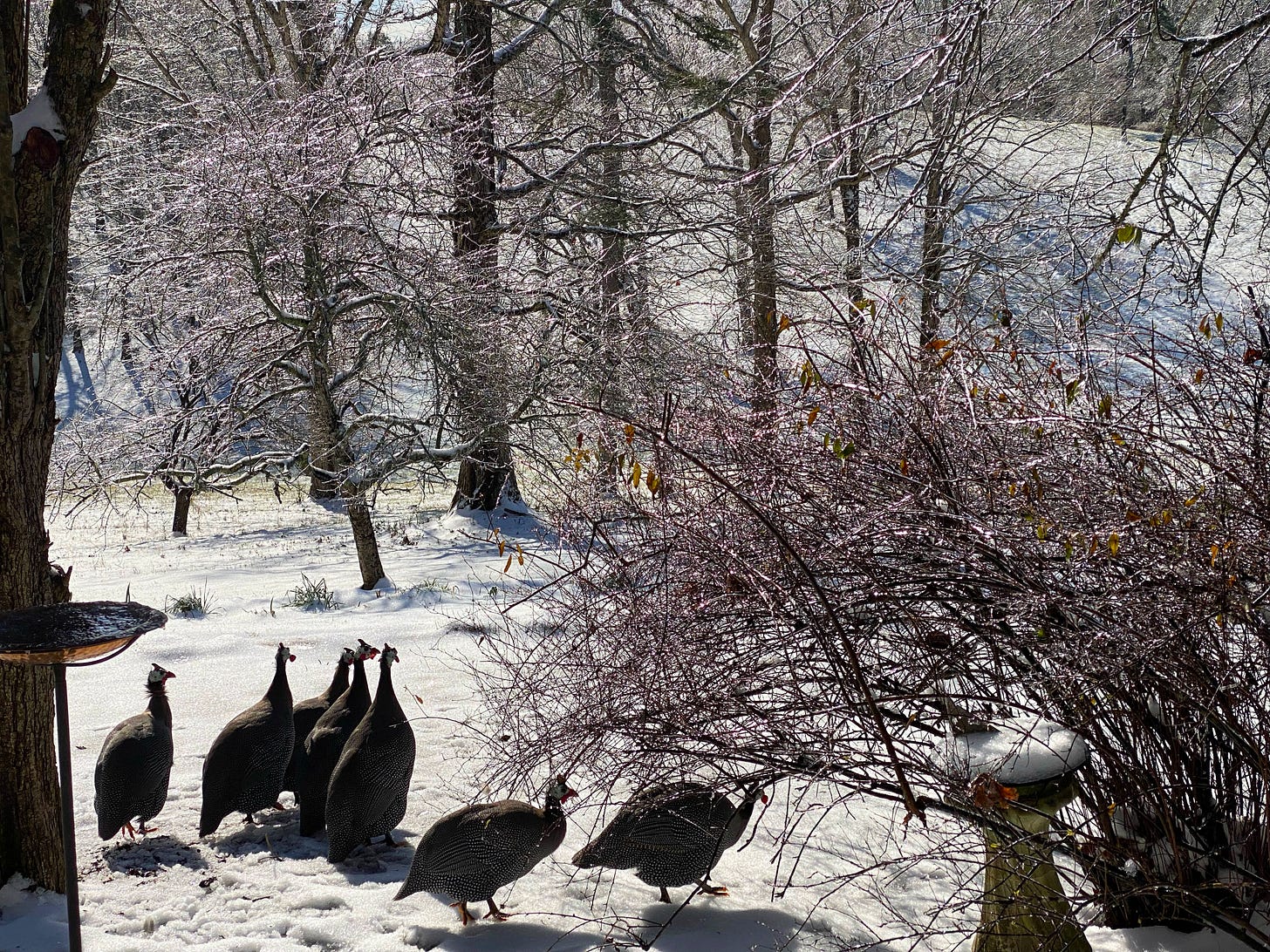Psychoanalysis would never work on a guinea hen, because guinea fowl cannot say “I.” They can only say “we.” Even if you tried to explain individuality to them, they would have no frame of reference, since a lone guinea hen is a dead guinea hen. Through trial and error, they have learned that the only way to survive foxes, coyotes, weasels, skunks, raccoons, hawks, owls, and snakes is to stick together, making an enormous racket if anything the least bit suspicious approaches the moving orb of their community. I can think of no apt metaphor for the sound they make, though you might try driving your car across a parking lot strewn with rubber bicycle horns, then back up and drive over them again.
When people come to visit, they often jump the first time they hear the guinea alarm or see the mob running single file past the front porch on their chopstick legs. What are those things? When I tell them, most are stunned. The closest they have come to a guinea hen is on a dinner plate—a miniature chicken with sides of roasted carrots and asparagus—while the birds in front of us are much larger. Mine stand about two feet tall, with black and white polka-dotted feathers, skinny necks, white scaly faces, red wattles, and a little bony knob on top that looks like a salvaged crown.
The two older ones sometimes forage a little ways from the other six, but the minute anyone screams, they all run to scream together. One bird becomes a congregation of tight-knit feathers with loud voices, all beaks pointing in the same direction. Sometimes it’s a house cat that has alarmed them; other times it’s the neighborhood fox. I thought they had killed an opossum once, since they were standing around it in a circle yelling at it while it lay motionless on the ground, but ten minutes after they lost interest, it got up and walked away.
When I find evidence of a fresh kill, it’s always one bird who strayed too far from the others. All that’s left is a pile of polka-dotted feathers, like an exploded pillow, without a bone in sight. This is how hawks leave things, which means the threat came from above, not below, at least this time. Either way, the principle is the same: when guinea fowl are in full plural mode, predators tend to lose heart in the face of such loud unity, going off in search of something that has not learned to say “we.”





My wife and I lived in Northern Idaho a bit off grid on five acres just below the Canadian border. It was a beautiful piece of property. We used Guinea hens as warning devices for predators both animal and human. What a wonderful picture of unity and protection. They also fly, always in unity, very low to the ground and not very far. They make a lot of noise when threatened and so should WE!
We need to be the Guinea fowl in this new state of the union.